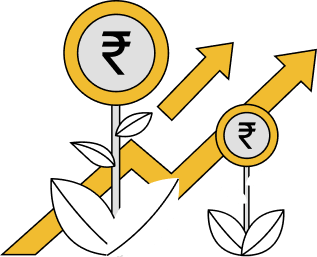
What is P2P lending?

P2P Lending
P2P means peer-to-peer. P2P lending is regulated by the Master Directions for NBFC Peer to Peer Lending Platform issued by the RBI in 2017. Only an NBFC can register as a P2P lender with the permission of RBI.
NBFC
NBFC means a non-banking finance company which is registered with RBI. All NBFC which does P2P lending business shall be registered as NBFC-P2P which is a type of Non-Banking Financial Company which carries on the business of providing services of Loan facilitation to willing lenders and borrowers through online platform. This type of Non-Banking Financial Company is not allowed to accept deposits or lend on its own
How P2P Lending works?
Loan Agreement
Disbursement Of Loan
Lenders
Post Lending Offers
Borrowers
Post Borrowing request
P2P Platform


Key Features of
P2P Lending
-
01
Multiple Borrowers:
P2P lending allows individual and retail investors to lend money to multiple borrowers, diversifying their investment portfolios.
-
02
Credit Scoring:
P2P platforms typically assess borrower creditworthiness using various parameters, including credit scores, financial background checks, and other risk assessment criteria.
-
03
Loan Amounts:
P2P lending platforms in India may offer loans ranging from small amounts to more substantial sums, catering to a wide range of financial needs.
-
04
Tenure:
Borrowers can choose the loan tenure that suits their requirements, and lenders can invest in loans with varying maturities.
-
05
Transparency:
P2P lending platforms provide transparency by disclosing borrower profiles, loan terms, and other relevant information to lenders, helping them make informed decisions.
-
06
Defaults and Recovery:
P2P platforms have mechanisms in place for handling loan defaults, including collections and recovery efforts. They may also have provisions for guarantee funds or insurance to mitigate lender risk.
-
07
Registration and Regulation:
P2P lending platforms in India are regulated by the Reserve Bank of India (RBI). They are required to obtain necessary approvals, follow regulatory guidelines, and maintain compliance.
-
08
KYC and Documentation:
P2P lending platforms require borrowers and lenders to complete Know Your Customer (KYC) documentation and verification to maintain transparency and compliance.
P2P vs Saving Acc vs FD
| Criteria | Saving Bank | Fixed Deposit | P2P |
|---|---|---|---|
| Limit | No Limit | No Limit | Upto 10 Lacs (50 Lacs) |
| Return | 2.5 -3% | 5-7.5% | 8% To 10% |
| Risk | No | No | Negligible |
| Consistency Of Return | Yes | Yes | Yes |
| Taxation | At Slab Rate | At Slab Rate | At Slab Rate |
| Given By | Bank | Bank | NBFC |
| Regulated By | RBI | RBI | RBI |
Invest in P2P lending with Jagoinvestor

FAQ's
What are the eligibility criteria for borrowers on P2P lending platforms?
Eligibility criteria for borrowers vary among P2P lending platforms but typically include factors such as age, income, credit history, employment status, and loan purpose.
What are the risks associated with P2P lending for lenders?
Risks for lenders in P2P lending include the possibility of borrower default, late repayments, and platform insolvency. Lenders should diversify their investment across multiple loans to mitigate individual default risks.
How are loan repayments handled on P2P lending platforms?
How are loan repayments handled on P2P lending platforms?
Is investing in P2P lending suitable for everyone?
P2P lending may appeal to investors seeking higher returns than traditional investment options like fixed deposits or mutual funds. However, it carries higher risks and may not be suitable for conservative investors seeking capital preservation.